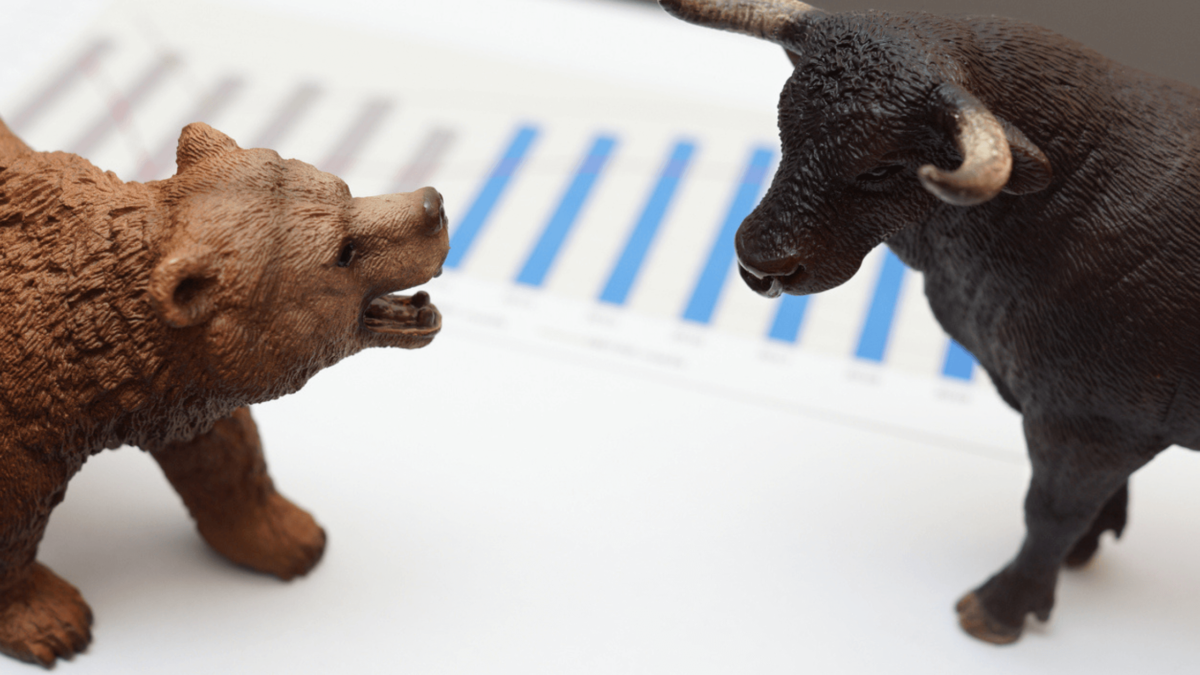Stock Market Update: The Bear is Back
August 29, 2022

US bear market resumes
The rebound in US stocks from mid-June always looked, to me, likely to end badly. So, over the months, I repeatedly called it a “countertrend rally” and a “bear market rally”.
The bottom line is this: Recent price action suggests the brief respite from the downtrend is largely over. The bear has returned.
The S&P 500 Index could attempt to consolidate at the 38.2% retracement level of its entire move from January to June – that is at around 4,090. But that, too, is likely to eventually fail.
The most important reason for my pessimistic view of the US market is rising rates. The optimists are dreaming.
The expectation that the Federal Reserve (Fed) will terminate its rate hiking cycle at 3.5-3.75% is wishful thinking.
The idea that the Fed would then start cutting rates by the middle of next year is only plausible if the US economy falls into a recession.
And if so, why would investors be celebrating a mid-2023 recession in 2022? It is too soon and the market is still too expensive.
Jerome Powell at Jackson Hole
I had written in the past about the Fed’s “twin mandates” – price stability and jobs. My idea was simple.: With inflation at its highest in 41 years, the Fed had clearly failed on price stability.
But with the jobs market running at its hottest possibly ever (depending on the measure one uses), why would the Fed not try to redeem itself trading off jobs for lower consumer prices?
Folks, let’s keep in mind that the inflation target is 2%. So, last week, Jerome Powell disappointed the wishful thinkers at Jackson Hole, with a speech that left little to the imagination.
Remember my references over the months to how high inflation rates were relative to the Fed’s 2% inflation target?
Well, Mr Powell reminded the Jackson Hole symposium of the same, four times in fact, in his prepared speech.
Here is a sampling from his speech: The Fed’s:
“Overarching focus now is to bring inflation back to our 2% goal”;
“Inflation is running well above 2 %”;
“(The Fed has to move its) policy stance purposefully to a level that will be sufficiently restrictive to return inflation to 2%”; and
“With inflation running far above 2% and the labour market extremely tight, estimates of longer-run neutral are not a place to stop or pause”.
What kind of Fed Chairman are you?
Arthur Burns was the 10th Chair of the Federal Reserve, serving between 1970 and 1978, and has been associated with failure to tame US inflation in the 1970s.
Paul Volcker – who took over from Burns – was seen as the Fed Chair who broke the back of US inflation.
I won’t go as far as to pin the blame for that inflation on Burns’ leadership. There are often many complicated factors in managing inflation and that inflation genie was probably already out of the bottle by the time Burns took over.
But, as I noted in the 15 August edition of Big Money, the easing of rates in tandem with softening inflation during the period 1970-1980 were followed by cycles of rate hiking and easing and hiking again, each cycle taking rates to new highs.
And eventually, it was Burns’ successor Paul Volcker who was seen as breaking the back of US inflation by taking the Fed effective rate to 19% for more than a year after inflation started going down.
So, as Mr Powell contemplated the future, he revealed to the Jackson Hole gathering his reflections on history.
“Restoring price stability will likely require maintaining a restrictive policy stance for some time. The historical record cautions strongly against prematurely loosening policy,”.
“The successful Volcker disinflation in the early 1980s followed multiple failed attempts to lower inflation over the previous 15 years.
A lengthy period of very restrictive monetary policy was ultimately needed to stem the high inflation and start the process of getting inflation down to the low and stable levels that were the norm until the spring of last year.
Our aim is to avoid that outcome by acting with resolve now.”
Whether Mr. Powell has the resolve to go the “full Volcker” is yet to be seen. But, he has signalled he prefers not go down the Arthur Burns route of cutting rates as soon as inflation eases.
Rates bets edge towards more hawkish outcomes
So, the most popular bet on the Feds Funds futures market is now for a 75-basis point (bp) hike in September (from 50 basis points a week earlier).
Then there’s a 50-basis point hike in November (unchanged from the previous week); no rate hike in December (unchanged from the previous week).
Finally, a 25-basis point hike in January 2023 (from no hikes a week earlier); and no hikes after January.
So, the most popular bet is that the terminal rate will be 3.75-4.0%, compared to the expectation of 3.5%-3.75% from a week earlier.
That seems to me still far too complacent. But I do recognise that it is – as the folks at the Fed love to say – “data dependent”.
So, for the bulls it’s fortunate that July PCE inflation offered some hope for the future. For the month, inflation fell to 6.3%, down from 6.8% for June.
Meanwhile, core PCE inflation fell from 4.8% for June to 4.6% for July. The Cleveland Fed’s Inflation Nowcasting expectation is for August PCE inflation to further ease to 6.1% but core PCE to stay unchanged at 4.6%.
Energy prices remain wild card
The oil futures market has been tossed both ways by the opposing forces of a possible deal to allow Iranian oil back into Western markets and an OPEC+ threat to cut production.
But in the near term, neither of those two factors are likely to affect the physical market.
According to Platts, Iranian crude and condensate exports are likely to stay flat at 800,000 barrels per day until the end of 2023.
Iran will need a lot of new investments to lift production and that will take time. As for OPEC+ threats of production cuts, it depends on whether it means cuts to its actual production or production targets.
A recent Reuters report said OPEC+ had produced 2.9 million barrels less than targeted anyway. So, there is a touch of the absurd at play here: The Iranians are being looked to for a supply increase they cannot produce for the next 12-15 months.
Meanwhile, OPEC+ is threatening to cut supply it is not producing anyway. And all that points to vulnerabilities on the supply side and the wild card possibility of another spike in oil prices, unless there is demand destruction.
What does the bear market in the US mean for Asia?
Firstly, we have to acknowledge the risks posed by rising US rates to the global economy. And the transmission channels include a stronger US Dollar and the eventual slowing of the US economy.
But Asian equities have tended to outperform the Developed Markets recently on weakness in US stocks.
It may simply be a case of funds seeking refuge from an overvalued US market being de-rated by the rapidly rising cost of money.
Over the past year, the MSCI ASEAN has outperformed the MSCI World when the US market was in retreat.
And we have observed the same for the MSCI China versus MSCI World over the past five months. (see charts below).


Sources: Refinitiv
Say Boon Lim
Say Boon Lim is CGS-CIMB's Melbourne-based Chief Investment Strategist. Over his 40-year career, he has worked in financial media, and banking and finance. Among other things, he has served as Chief Investment Officer for DBS Bank and Chief Investment Strategist for Standard Chartered Bank.
Say Boon has two passions - markets and martial arts. He has trained in Wing Chun Kung Fu and holds black belts in Shitoryu Karate and Shukokai Karate. Oh, and he loves a beer!







